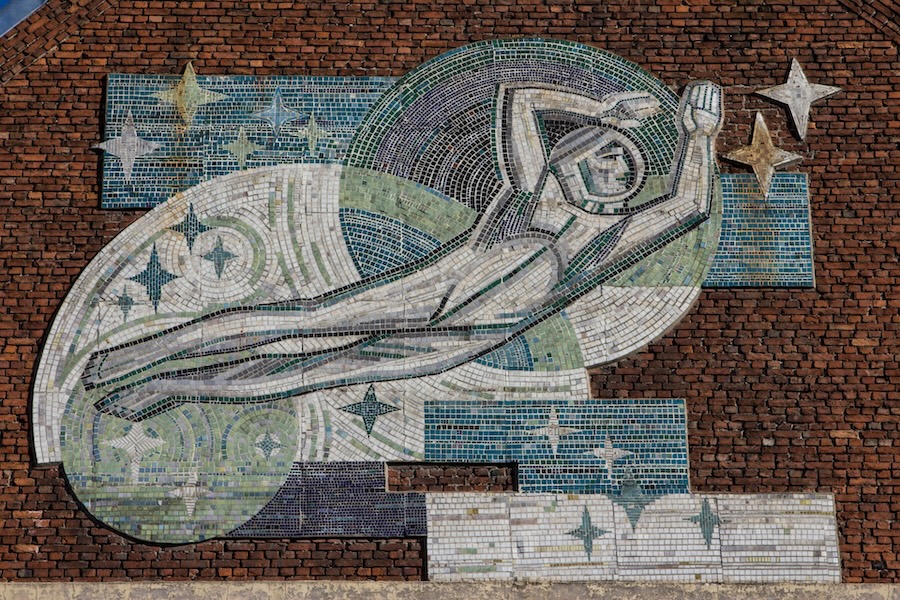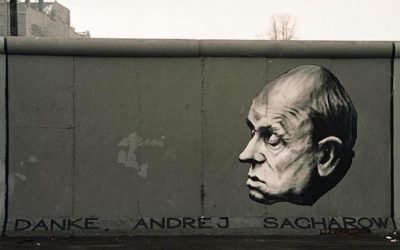Part 1: The Structure of Interactions between Science, Higher Education, and the State in the Soviet Union.
Dmitry Dubrovsky
Photo: The situation in science and higher education varied substantially in different eras of the USSR. Photo by Soviet Artefacts on Unsplash
The Re-Sovietization of Russian Science?
In modern-day discussions of how to understand the dramatic transformations occurring in Russian science and higher education, the term “re-Sovietization” often comes up. The current state of Russian academia is increasingly compared to the Soviet Union, and management and control practices are described as reproducing Soviet approaches.
In support of this narrative, the following features are pointed out:
- a growing ideological component in higher education, the humanities, and the social sciences
- the presence of repressive instruments of control over the loyalty of students, teachers, and researchers
- to a certain extent, growing centralization and the return of state procurement both in the field of higher education and in the field of research, primarily in the scientific and technical sphere
This comparison addresses the tactics that Soviet scientists and teachers employed to circumvent, or at least soften, the ideological control they faced—especially in the humanities and social sciences, both in the field of science and in higher education.
Thus, this comparison with the USSR must be based on two categories of arguments.
- The first category explains the structure of interaction between government, science, and higher education in the USSR and compares it with current practices.
- The second compares the strategies and practices Soviet scientists used to “respond” to the ideological and administrative oppression of the Soviet party and bureaucratic apparatus with the strategies and tactics chosen by scientists and teachers who remain in Russia today.
How Was Science Managed in the USSR?
Are contemporary practices within Russian higher education and science “Sovietization,” strictly speaking? To answer this question, we need to understand what science and higher education was in the USSR.
What did the management system of science and higher education in the USSR look like? The main management method was vertical integration based on a plan. The USSR Academy of Sciences, subordinate to the Council of Ministers, was the main scientific center of the country; it was simultaneously a scientific and a political-administrative structure.
A number of technological disciplines were integrated into various industry-specific academies and research institutes—medical, agricultural, etc. These industries were under the control of the relevant ministries.
Planning was conducted by the State Committees on Science and Technology, which created five-year plans and coordinated applied research, especially in the defense and industrial sectors.
Ideological control was carried out by the Department of Science and Educational Institutions of the Central Committee of the CPSU.
What Is Being Compared?
It seems that the first problem with such a comparison is its timeless nature. When comparing the current state of academia with the USSR, researchers are generally not particularly precise in indicating to which time period they are referring. The situation in science and higher education varied substantially in different eras of the USSR.
To wit, Soviet science historian Loren Graham identifies five stages of scientific development in the USSR. He calls the Khrushchev era “post-Stalin liberalization” and the Brezhnev era “stagnation and bureaucratization” (Graham, 1993).
The level of control and ideological pressure differed in different periods. Graham’s periodization defines Khrushchev’s time as a “golden era” in the development of Soviet science and higher education.
By contrast, the majority of those who compare the current situation in Russia with the past look to the Brezhnev era, when science and higher education stagnated compared to the Khrushchev era and the level of repression was clearly higher due to the active spread of “academic dissidence.”
The Power Vertical and Autonomy
In general, science was understood as a means of building communism. At the same time, due to the Soviet party nomenklatura‘s* ideas about science overall and its role in society, different amounts of pressure were put on different sciences.
- In STEMM, the main concern was not so much in the ideological sphere (with the exception of some disciplines) but in the safety sphere.
- The humanities as a whole were under the strongest ideological control of the party apparatus.
* A category of people in the Soviet Union who held key administrative positions; the ruling bureaucratic elite.
That said, the logic of interactions between science, higher education, and the party apparatus was understood. It was a strictly structured power vertical, which in a number of cases co-opted representatives of science and higher education into management and control bodies.
It is important to also compare what is being compared. After all, science and higher education in the USSR were organized in a much more complex manner. For example, in addition to the significant autonomy of the USSR Academy of Sciences, the national academies also had noticeable autonomy, especially after the Khrushchev thaw.
One example of this particular kind of autonomy can be found in the stories of freethinkers—not necessarily political dissidents, but scientific freethinkers who were located not in Moscow or Leningrad, but in a “safe zone” somewhere further away. For example, in Tartu, Estonia, far from Moscow’s control, Yuri Lotman created a special school of semiotic studies free from the ideological dictates of the party.
The Boundaries of Prohibition
A characteristic feature of Soviet management is the strict verticalization of the management of science and higher education, including planning and dual (party and police) control over scientific workers, teachers, and students.
From our point of view, the level of party and ideological control varied dramatically, not only across geographical distance, but also across disciplines. Some disciplines and areas were traditional spheres of party and KGB control—from nuclear physics to oriental studies. Meanwhile, other areas were less controlled, and Soviet scientists often chose these as a “quiet backwater” where they could hide from party and state control.
Some disciplines were suppressed completely—simply recall Lysenkoism and the persecution of cybernetics.
Sometimes, the boundaries of what was prohibited were built not so much between disciplines as within them, separating issues that were essential from those that were of little-to-no interest to the Soviet state.
For example, in archaeology (the subject most familiar to the author of this article), some obvious political topics were questions of the origin of the Russian state (the so-called “Varangian question“). These were subject to some censorship and closely monitored.
By contrast, research into, for example, Scythian archeology was of noticeably less interest to the Soviet authorities compared to Slavic archeology, which had a clearly political and ideological purpose. Such security zones protected, according to Boris Firsov’s term, “different thinkers“—not necessarily opponents of the authorities, but rather opponents of the unanimity created by ideological and party pressure.
In higher education, as in scientific institutes, there were certain departments that, strictly speaking, were themselves mainly ideological—departments of scientific communism, history of the CPSU, and scientific atheism, as well as corresponding “scientific” institutes, for example, the Institute of Marxism-Leninism under the Central Committee of the CPSU or the Academy of Social Sciences.
Dual Control
At the same time, within the framework of STEMM there were so-called “boxes,” or closed research institutes, operating under dual control of the KGB due to the specific features of the research (primarily nuclear physics).
Thus, Soviet management practice was based on verticality and dual control:
- official ideological control was carried out through party organizations in research and scientific institutes
- police control was through the relevant First Departments supervised by the KGB
At the same time, with regard to scientists—especially in STEMM—questions of secrecy prevailed, and KGB control was more visible. On the other hand, it seems that higher education was more under the control of the party apparatus. This may well be explained by the important ideological role of “educating Soviet citizens,” which was an ideological task for higher education.
Although this control was unevenly distributed, the structure of the administration itself and the dual control largely ensured universal control—even in comparison with society as a whole—by the state and party apparatus over the activities of scientific workers and teachers.
* * *
Even under these conditions, science was able to develop, partly due to the unevenness of the control and the existence of various kinds of “free zones,” some of which were literally “unfree zones.” There, KGB control virtually crowded out party control, giving rise to some semblance of academic autonomy and scientific freedom.
It is also noticeable that the phenomenon of resistance—“academic” or “scientific dissidence”—was associated less with educational institutions than with scientific ones, primarily STEMM, due to the lower level of ideological control over the natural sciences.
At the same time, academic research organizations felt more independent, having their own scientific councils and thus being less integrated into corporate structures, such as industry research institutes.
The practices of quiet resistance that were formed within the Soviet system have proven to be in great demand under the new conditions in Russian science and higher education after February 2022.
In Part Two, we will compare the institutional principles of organizing Russian science and higher education with the Soviet principles described in Part One.





0 Comments